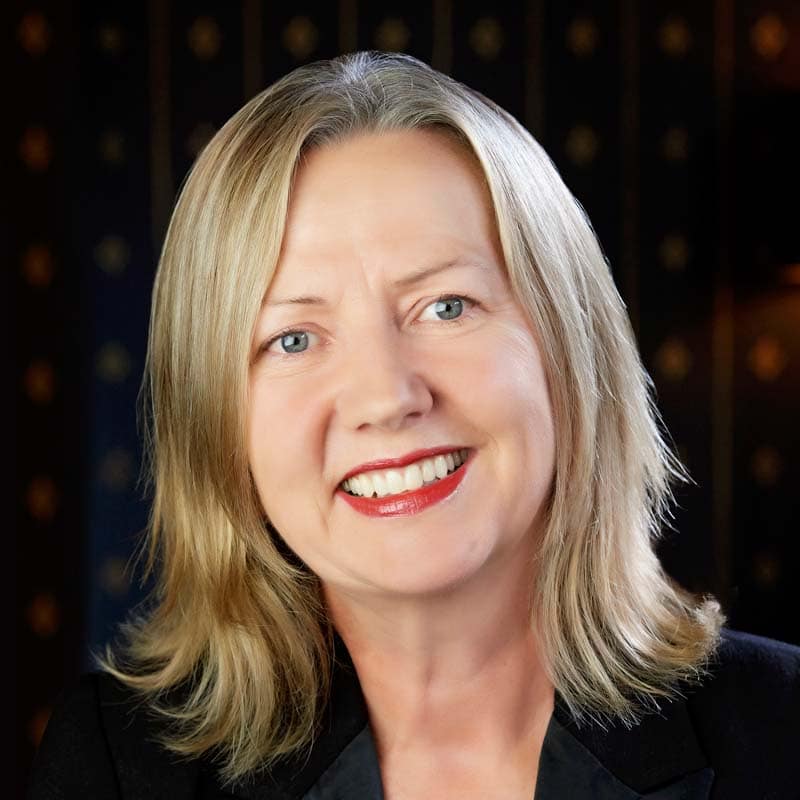On 5 November 2020, the High Court of Australia refused a special leave application by Mylan Health Pty Ltd to appeal the decision of the Full Federal Court (FFC) in which three patents licensed to Mylan covering its fenofibrate product, Lipidil, were found to be invalid (Mylan Health Pty Ltd v Sun Pharma ANZ Pty Ltd [2020] HCASL 234. The FFC case was an appeal from a decision of a single judge in the Federal Court. No further avenue of appeal is available and hence the FFC’s significant findings regarding the circumstances in which a patent may be invalidated by clinical trial information are now cemented into Australian precedent law.
First Instance Decision
The primary judge found that the claims of patent 2006313711 (the “Mylan 711 Patent”) limited by therapeutic use for diabetic retinopathy, were not novel in light of a clinical trial protocol referred to as “the ACCORD Protocol”. The Protocol contained a number of hypotheses, including that “a therapeutic strategy that uses a fibrate to lower triglyceride levels and raise HDL cholesterol levels in patients already receiving a statin drug for treatment of LDL cholesterol levels, will reduce the rate of development or progression of [diabetic retinopathy]…”. Mylan argued that this was merely a “reasoned hypothesis” yet to be evaluated and, as such, could not deprive the patent of novelty as an anticipatory disclosure. The Protocol, Mylan indicated, taught only the administration of fenofibrate for the purpose of evaluating its efficacy in relation to the therapeutic use, and did not disclose “the deliberate administration” of fenofibrate for the purpose.
Federal Court Decision
The FFC unanimously upheld the first instance decision and found that “by proposing the study, according to the Protocol and its hypothesis, there was a disclosure that fenofibrate was to be deliberately administered with a statin with the aim of preventing or treating diabetic retinopathy in patients in need of such treatment.” (at 105; emphasis added).
The FFC noted that “prior documentary disclosure will not be anticipatory if it merely provides information at a level of generality which, while encompassing that which is claimed as the invention, nevertheless fails to identify the invention with sufficient specificity” (at 83). Importantly, however, in rejecting Mylan’s submission that a document containing a hypothesis could not be anticipatory (and thereby deprive the invention of novelty), the Court confirmed that for the purpose of assessing the novelty of the invention claimed, “the question, simply put, remains: what does the prior document disclose?” (at 104). Moreover, the Court emphasized that validation or proof of the hypothesis is “certainly not required” in order for a finding of lack of novelty. The Court specifically noted that:
“[…] it is not a requirement for a patentable invention that the invention, as claimed, be based on scientific proof or substantiation: Generic Health Pty Ltd v Bayer Pharma Aktiengesellschaft [2018] FCAFC 183; 267 FCR 428 at [135]. That being so, no greater requirement is imposed on a prior documentary disclosure in order for it to be anticipatory. What is required is that the prior document discloses that which is subsequently claimed as an invention. If that is disclosed, the invention cannot be new.” (at 106)
Interestingly, the FFC discussed Mylan calling in aid the analysis in InterPharma, Pty Ltd v Hospira, Inc (No 5) [2019] FCA 960; 149 IPR 182, which found that the patient consent form used in Phase II trials—the 249 Form—was not an anticipatory disclosure of the use of dexmedetomidine to sedate a patient in an ICU. The Court acknowledged that “there are certainly passages in that analysis which support the way in which Mylan couched its submissions in this case. For example, the trial judge in that case referred (at [419]) to the fact that the 249 Form recorded a proposal for a trial to evaluate an hypothesis, namely whether use of dexmedetomidine in ICU sedation was safe, effective and dose titratable”. However, the FFC found that while comparisons with other case examples can be instructive, at root is the evaluation of particular evidence, and the consequent findings of fact in each case based on that evidence. In the present case, the FFC was not persuaded by Mylan’s arguments and the relevant claims were found invalid for want of novelty in light of the Protocol.
Application of UK Cases
It is noteworthy that in the course of the proceedings, Mylan cited United Kingdom (UK) case law, in particular Regeneron Pharmaceuticals Inc v Genentech Inc [2012] EWHC 657 (Pat); Hospira UK Limited v Genentech Inc [2015] EWHC 1796 (Pat); [2016] RPC 1 and Hospira UK Ltd v Genentech Inc [2014] EWHC 1094 (Pat), to support its position that the Protocol could not anticipate the invention as claimed because it advanced no more than a reasoned hypothesis for treatment, not a method of treatment as such. The Australian FFC acknowledged that the UK cases did provide some broad support for Mylan’s position in finding that “in the case of Swiss type claims and purpose-limited product claims allowed under the European Patent Convention 2000, novelty will not be destroyed merely by a prior disclosure that a pharmaceutical compound (or combination of compounds) might have the therapeutic effect that the patent in suit claims for that compound or combination.” (at 106; emphasis added). However, on examining these cases, it was concluded that the principles on which the court proceeded in each case were “not the principles developed under Australian case law” (at 106; emphasis added). The UK treats “Swiss-style” claims and purpose-limited claims (such as those in the present case) as requiring the achievement or establishment of the claimed therapeutic effect, whereas in Australia only the administration of the claimed drug for the purpose of the claimed therapeutic effect is required and this distinction was highly relevant in the present case.
Relevance of Clinical Studies to Novelty and Inventive Step
In the context of a discussion relating to double-blind studies cited in relation to novelty arguments i.e. clinical trials in which neither the investigators nor the patients know whether they are receiving fenofibrate or a placebo, it is of interest that the FFC was “inclined to the view” that a challenge to novelty ought not to fail simply because the studies were double-blind. It was specifically noted that administering fenofibrate or placebo to study participants in a clinical trial could anticipate the claims, particularly when considered together with knowledge of the aims and methods of the clinical trials in question.
Notably, the FFC found that the invention claimed in the Mylan 711 Patent was obvious in light of information contained in a further clinical study, ETDRS 22. This study reported an association between elevated serum triglyceride levels and an increased risk of developing retinal hard exudates. For the purposes of the Mylan 711 Patent, the prevention of diabetic retinopathy included preventing the development or progression of hard exudates. The FFC found that the assessment of obviousness is aided by asking the “reformulated Cripps question” i.e. whether a person skilled in the art would be directly led as a matter of course to try the claimed invention in the expectation that it might well produce a useful or better alternative. Importantly, however it was indicated that this does not require the Court to form a view as to whether the person skilled in the art’s expectation of success was better than “fifty-fifty” or to consider the chance of success in percentage terms. The Court noted that while an outcome that is a “mere possibility” or simply “worth a try” is unlikely to be deemed obvious, in the present case the evidence supported the finding that a person skilled in the art would consider the outcome disclosed in ETDRS 22 to be more than a mere possibility i.e. the person skilled in the art reading ETDRS 22 would have a reasonable expectation that they might well produce the claimed outcome by following the information in that disclosure.
Summary
Validation or proof of a hypothesis is not required to deprive an invention of novelty in Australia. Further, it is not necessary for a person skilled in the art to be persuaded by what is disclosed in the prior publication to work the method described in the prior publication, or to agree with suggestions or recommendations contained in the document. Clinical trial data may also be used successfully in obviousness arguments if it can be supported by evidence that the person skilled in the art would have a reasonable expectation that they might well produce the claimed outcome by following the information in the disclosure.
Significantly, therefore, this case makes clear that in assessing the relevance of clinical trial information to the validity of a patent, the case law in other jurisdictions cannot be relied upon. An Australia-specific approach will be necessary.
Pearce IP previously reported here on the FFC findings in the decision discussed above in relation to infringement.

Jacinta Flattery-O'Brien PhD
Special Counsel, Patent Attorney
Jacinta is a trusted and recognised leader in biotech/pharma patenting, identified as an "IP Star" by the highly regarded Managing Intellectual Property Journal (MIP) for her expertise.
She is a registered patent attorney with 20 years' experience serving clients in the biotechnology, pharmaceutical and biopharmaceutical industries.

Naomi Pearce
CEO, Executive Lawyer (AU, NZ), Patent Attorney (AU, NZ) & Trade Mark Attorney (AU)
Naomi is the founder of Pearce IP, and is one of Australia’s leading IP practitioners. Naomi is a market leading, strategic, commercially astute, patent lawyer, patent attorney and trade mark attorney, with over 25 years’ experience, and a background in molecular biology/biochemistry. Ranked in virtually every notable legal directory, highly regarded by peers and clients, with a background in molecular biology, Naomi is renown for her successful and elegant IP/legal strategies.
Among other awards, Naomi is ranked in Chambers, IAM Patent 1000, IAM Strategy 300, is a MIP “Patent Star”, and is recognised as a WIPR Leader for patents and trade marks. Naomi is the 2023 Lawyers Weekly “IP Partner of the Year”, the 2022 Lexology client choice award recipient for Life Sciences, the 2022 Asia Pacific Women in Business Law “Patent Lawyer of the Year” and the 2021 Lawyers Weekly Women in Law SME “Partner of the Year”. Naomi is the founder of Pearce IP, which commenced in 2017 and won 2021 “IP Team of the Year” at the Australian Law Awards.

